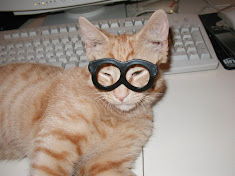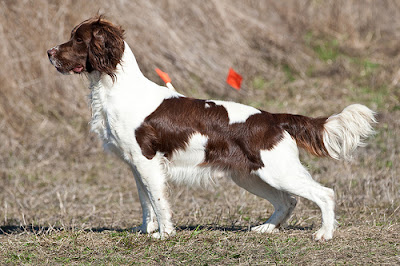Horses are fight or flight creatures, they flee from danger or stand fast to fight. From a horse's point of view a trailer must seem like a dark and dangerous cave-like object and from a survival point of view, getting stuck in a cave is never a good move to make. Years of survival instincts have taught horses not to go into dark, ominous looking places.
Many horses are initially fearful of being led into a trailer so it's best to break down the experience in order not to overwhelm the horse. A good way to do this is to introduce the horse to a thick sheet of plywood on the ground and have him walk over it. Allow him to look at the plywood and smell it and don't force him over it. A lot of coaxing helps relax the horse. Try this several times until the horse is comfortable walking over it.
In the next step of the exercise try raising the sheet over some 4x4s but make sure it is strong enough to safely bear the weight of the horse otherwise it may break and scare the horse. Place some grain or hay onto the raised plywood to encourage the horse to step onto it and to reinforce the idea that this is a pleasant experience.
Enlist the help of some friends to hold plastic sheets in order to fashion a chute or tunnel for the horse to walk through. Making it wider at one end will simulate a trailer. Again, coax the horse gently to walk through this makeshift chute. When the horse is comfortable with this exercise, try making a tunnel like structure using a plastic sheet and walk your horse through it. Your helpers can stand on hay bates to reach the desired height.
These exercises should help the most difficult to load horses become more comfortable with the whole loading experience as you have broken down the ordeal for them. Breaking down any exercise in this way makes the horse less prone to being overwhelmed by a situation and more accepting.
Work at your horse's pace and remember to remain patient and calm at all times. A lot of gentle encouraging goes a long way and patience is definitely a virtue with horses. Once your horse is going through the above mentioned exercises confidently it's time to introduce the actual trailer.
Use a long lead rope and confidently walk your horse to the trailer without any hesitation, if you hesitate your horse will too. If the horse refuses to load, turn him around and try again. Keep doing this in a firm and calm manner until the horse loads. Once you've managed to coax the horse into the trailer make sure you reward him amply for a job well done.
Calmly lead the horse out and try again, remember to feed and offer the horse treats in the trailer then unload him. Don't leave the horse in the trailer for long periods of time initially; your goal is to make him comfortable being led into the trailer.
Author Resource: Written by Josie Amani
Stal Amani carries the complete line of Equicrystal products at highly competitive prices, please visit our website today to find out how we can help you get the best out of your horse http://www.stalamani.com
Article From Pet Article World
 |
| Horses Loaded Up and Ready to Roll by Jan Glas |
In the next step of the exercise try raising the sheet over some 4x4s but make sure it is strong enough to safely bear the weight of the horse otherwise it may break and scare the horse. Place some grain or hay onto the raised plywood to encourage the horse to step onto it and to reinforce the idea that this is a pleasant experience.
Enlist the help of some friends to hold plastic sheets in order to fashion a chute or tunnel for the horse to walk through. Making it wider at one end will simulate a trailer. Again, coax the horse gently to walk through this makeshift chute. When the horse is comfortable with this exercise, try making a tunnel like structure using a plastic sheet and walk your horse through it. Your helpers can stand on hay bates to reach the desired height.
These exercises should help the most difficult to load horses become more comfortable with the whole loading experience as you have broken down the ordeal for them. Breaking down any exercise in this way makes the horse less prone to being overwhelmed by a situation and more accepting.
Work at your horse's pace and remember to remain patient and calm at all times. A lot of gentle encouraging goes a long way and patience is definitely a virtue with horses. Once your horse is going through the above mentioned exercises confidently it's time to introduce the actual trailer.
Use a long lead rope and confidently walk your horse to the trailer without any hesitation, if you hesitate your horse will too. If the horse refuses to load, turn him around and try again. Keep doing this in a firm and calm manner until the horse loads. Once you've managed to coax the horse into the trailer make sure you reward him amply for a job well done.
Calmly lead the horse out and try again, remember to feed and offer the horse treats in the trailer then unload him. Don't leave the horse in the trailer for long periods of time initially; your goal is to make him comfortable being led into the trailer.
Author Resource: Written by Josie Amani
Stal Amani carries the complete line of Equicrystal products at highly competitive prices, please visit our website today to find out how we can help you get the best out of your horse http://www.stalamani.com
Article From Pet Article World

























